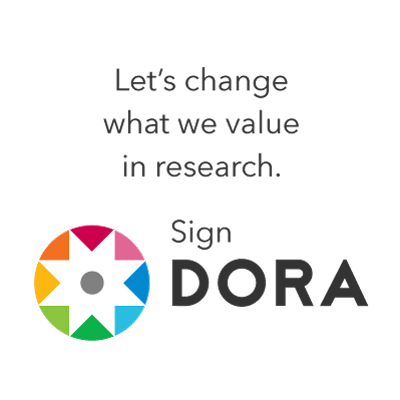Devising a Usability Development Life Cycle (UDLC) Model for Enhancing Usability and User Experience in Interactive Applications
DOI:
https://doi.org/10.33317/ssurj.475Abstract
To assess the quality, acceptability and user experience of interactive applications, usability is one of the most integral quality attributes. However, large number of gaps and challenges exist in current usability practices causing the emergence of usability bugs at user end. The idea to bridge the gap between user and interactive product interaction serves as a motivation for this research. Existing usability gaps and challenges demand the need of a maturity model that should efficiently target the unaddressed deficiencies in the area of usability. This study aims to propose such a systematic and comprehensive maturity model, i.e., Usability Development Life Cycle (UDLC) model. To ensure easy and smooth implementation of proposed model, systematic and comprehensive set of guidelines are also proposed along with the model. The model is validated for its competency by applying on poor website and mobile application with weak usability and bad user experience. Execution of proposed model on the targeted samples resulted in enhanced usability with improved user satisfaction.
References
Seffah, A., Donyaee, M., Kline, R. B., & Padda, H. K. (2006). Usability measurement and metrics: A consolidated model. Software quality journal, 14(2), 159-178.
Granollers, T., & EUPAJ, I. (2003). User Centred Design Process Model. Usability Engineering and Software Engineering Integration. Interact.
Fontdevila, D., Genero, M., & Oliveros, A. (2017, November). Towards a usability model for software development process and practice. In International Conference on Product-Focused Software Process Improvement (pp. 137-145). Springer, Cham.
Winter, S., Wagner, S., & Deissenboeck, F. (2007, March). A comprehensive model of usability. In IFIP International Conference on Engineering for Human-Computer Interaction (pp. 106-122). Springer, Berlin, Heidelberg.
Gulzar, K., Sang, J., Ramzan, M., & Kashif, M. (2017). Fuzzy approach to prioritize usability requirements conflicts: An experimental evaluation. IEEE Access, 5, 13570-13577.
Ismail, N., Ahmad, F., Kamaruddin, N., & Ibrahim, R. (2016). A review on usability issues in mobile applications. IOSR Journal of Mobile Computing & Application, 3(3), 47-52.
Khan, M., Sulaiman, S., Said, A. M., & Tahir, M. (2011, September). Classification of usability issues for haptic systems. In 2011 7th International Conference on Emerging Technologies (pp. 1-4). IEEE.
Yusop, N. S. M., Grundy, J., & Vasa, R. (2016). Reporting usability defects: a systematic literature review. IEEE Transactions on Software Engineering, 43(9), 848-867.
Haaksma, T. R., de Jong, M. D., & Karreman, J. (2018). Users’ personal conceptions of usability and user experience of electronic and software products. IEEE transactions on professional communication, 61(2), 116-132.
Raza, A., Capretz, L. F., & Ahmed, F. (2012). Usability bugs in open-source software and online forums. IET software, 6(3), 226-230.
Almaiah, M. A., & Man, M. (2016). Empirical investigation to explore factors that achieve high quality of mobile learning system based on students’ perspectives. Engineering science and technology, an international journal, 19(3), 1314-1320.
Pucillo, F., & Cascini, G. (2014). A framework for user experience, needs and affordances. Design Studies, 35(2), 160-179.
Bargas-Avila, J. A., & Hornbæk, K. (2011, May). Old wine in new bottles or novel challenges: a critical analysis of empirical studies of user experience. In Proceedings of the SIGCHI conference on human factors in computing systems (pp. 2689-2698).
Michalco, J., Simonsen, J. G., & Hornbæk, K. (2015). An exploration of the relation between expectations and user experience. International Journal of Human-Computer Interaction, 31(9), 603-617.
Kurosu, M. (2015, August). Usability, quality in use and the model of quality characteristics. In International Conference on Human-Computer Interaction (pp. 227-237). Springer, Cham.
Hertzum, M., & Clemmensen, T. (2012). How do usability professionals construe usability? International Journal of Human-Computer Studies, 70(1), 26-42.
Strate, J. D., & Laplante, P. A. (2013). A literature review of research in software defect reporting. IEEE Transactions on Reliability, 62(2), 444-454.
Breu, S., Premraj, R., Sillito, J., & Zimmermann, T. (2010, February). Information needs in bug reports: improving cooperation between developers and users. In Proceedings of the 2010 ACM conference on Computer supported cooperative work (pp. 301-310).
Petrie, H., & Power, C. (2012, May). What do users really care about? A comparison of usability problems found by users and experts on highly interactive websites. In Proceedings of the SIGCHI Conference on Human Factors in Computing Systems (pp. 2107-2116).
Bilgihan, A., & Bujisic, M. (2015). The effect of website features in online relationship marketing: A case of online hotel booking. Electronic commerce research and applications, 14(4), 222-232.
Faisal, C. N., Gonzalez-Rodriguez, M., Fernandez-Lanvin, D., & de Andres-Suarez, J. (2016). Web design attributes in building user trust, satisfaction, and loyalty for a high uncertainty avoidance culture. IEEE Transactions on Human-Machine Systems, 47(6), 847-859.
Parikh, S. P., & Esposito, J. M. (2011). Negative feedback for small capacitive touchscreen interfaces: A usability study for data entry tasks. IEEE transactions on haptics, 5(1), 39-47.
Yamamoto, N., & Uchida, N. (2017, March). Improvement of the interface of smartphone for an active learning with high learning concentration. In 2017 31st international conference on advanced information networking and applications workshops (WAINA) (pp. 531-534). IEEE.
Seckler, M., Tuch, A. N., Opwis, K., & Bargas-Avila, J. A. (2012). User-friendly locations of error messages in web forms: Put them on the right side of the erroneous input field. Interacting with Computers, 24(3), 107-118.
Macaulay, C., Sloan, D., Jiang, X., Forbes, P., Loynton, S., Swedlow, J. R., & Gregor, P. (2009). Usability and user-centered design in scientific software development. IEEE software, 26(1), 96.
Fukuzumi, S. I., Noda, N., & Tanikawa, Y. (2017, May). How to apply human-centered design process (HCDP) to software development process?. In 2017 IEEE/ACM 1st International Workshop on Design and Innovation in Software Engineering (DISE) (pp. 13-16). IEEE.
Wang, S. L., Chen, Y. L., Kuo, A. M. H., Chen, H. M., & Shiu, Y. S. (2016). Design and evaluation of a cloud-based Mobile Health Information Recommendation system on wireless sensor networks. Computers & Electrical Engineering, 49, 221-235.
Lee, S., & Koubek, R. J. (2010). The effects of usability and web design attributes on user preference for e-commerce web sites. Computers in Industry, 61(4), 329-341.
Ganguly, B., Dash, S. B., Cyr, D., & Head, M. (2010). The effects of website design on purchase intention in online shopping: the mediating role of trust and the moderating role of culture. International Journal of Electronic Business, 8(4-5), 302-330.
Liu, W., Guo, F., Ye, G., & Liang, X. (2016). How homepage aesthetic design influences users’ satisfaction: Evidence from China. Displays, 42, 25-35.
Shaouf, A., Lü, K., & Li, X. (2016). The effect of web advertising visual design on online purchase intention: An examination across gender. Computers in Human Behavior, 60, 622-634.
Carvajal, L., Moreno, A. M., Sanchez-Segura, M. I., & Seffah, A. (2013). Usability through software design. IEEE Transactions on Software Engineering, 39(11), 1582-1596.
Struijk, L. N. A., Bentsen, B., Gaihede, M., & Lontis, E. R. (2017). Error-free text typing performance of an inductive intra-oral tongue computer interface for severely disabled individuals. IEEE Transactions on Neural Systems and Rehabilitation Engineering, 25(11), 2094-2104.
Lascu, D. N., & Clow, K. E. (2013). Website interaction satisfaction: A reassessment. Interacting with Computers, 25(4), 307-311.
Partala, T., & Kallinen, A. (2012). Understanding the most satisfying and unsatisfying user experiences: Emotions, psychological needs, and context. Interacting with computers, 24(1), 25-34.
Sfetsos, P., Angelis, L., Stamelos, I., & Raptis, P. (2016, July). Integrating user-centered design practices into agile web development: A case study. In 2016 7th International Conference on Information, Intelligence, Systems & Applications (IISA) (pp. 1-6). IEEE.
Munir, M. B., & Mushtaq, A. (2012, October). A framework for extending usability engineering: API usability essentials: Extending usability via component-based platform. In 2012 IEEE Conference on Open Systems (pp. 1-6). IEEE.
Downloads
Published
How to Cite
Issue
Section
Categories
License
Copyright (c) 2022 Qurat ul Ain raja, Tauseef Rana (Author)

This work is licensed under a Creative Commons Attribution 4.0 International License.









